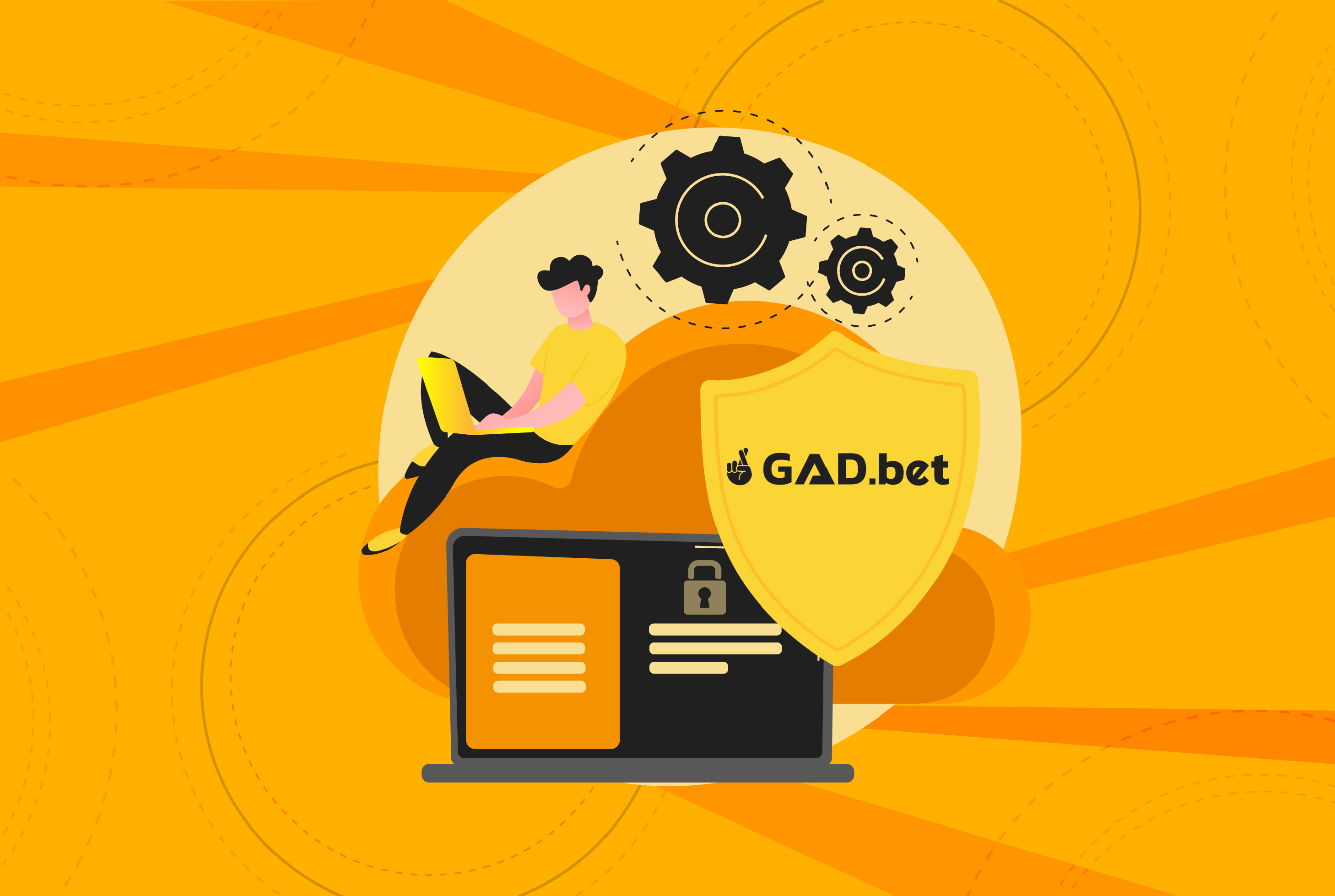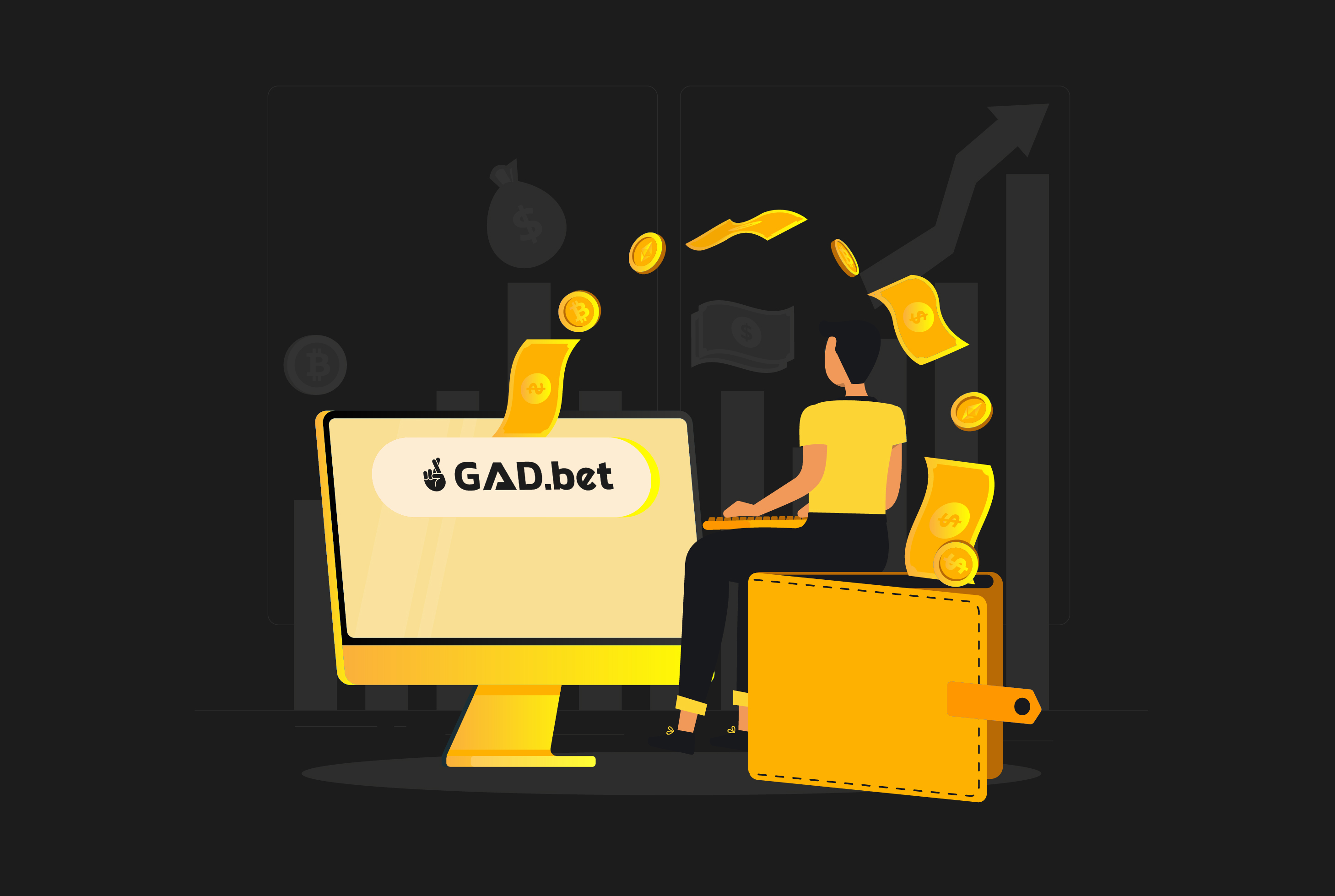Content
- To set up Streamlabs OBS
- Basic principles for setting up Streamlabs OBS
- How to customize the Video tab in Streamlabs OBS?
- How to customize the Output tab in Streamlabs OBS?
- How to set up the “Stream” section in Streamlabs OBS?
- How to set up the “Record” section in Streamlabs OBS?
- How to customize the “Audio” section in Streamlabs OBS?
To set up Streamlabs OBS

To set up Streamlabs OBS for quality streaming, follow these steps:
- Download and install: Go to the Streamlabs OBS website and download the software. Install it on your computer and sign in with your preferred streaming platform (Twitch, YouTube, Facebook, etc.) account.
- Choose a theme: When you first open Streamlabs OBS, you’ll be prompted to choose a theme for your stream. Browse through the options and select a theme that best fits your style. You can change or customize this later if you want.
- Configure video settings: a. Click on the gear icon in the lower left corner to open the settings menu. b. Go to the ‘Video’ tab. c. Set your ‘Base (Canvas) Resolution’ to your monitor’s native resolution (usually 1920×1080). d. Set the ‘Output (Scaled) Resolution’ to the resolution you want to stream at. For a balance of quality and performance, 1280×720 is a common choice. e. Set the ‘Downscale Filter’ to ‘Lanczos (Sharpened scaling, 32 samples)’ for the best quality. f. Set your ‘FPS Type’ to ‘Common FPS Values’ and select your desired frame rate (usually 30 or 60 FPS).
- Configure output settings: a. Go to the ‘Output’ tab. b. Set the ‘Output Mode’ to ‘Advanced’. c. In the ‘Streaming’ section, set the ‘Encoder’ to ‘x264’ for software encoding or ‘NVENC H.264’/’AMD VCE H.264’ for hardware encoding (if available). d. Set the ‘Rate Control’ to ‘CBR’ (Constant Bitrate). e. Set the ‘Bitrate’ according to your internet upload speed and streaming platform guidelines. A good starting point is 2500-3500 Kbps for 720p at 30 FPS or 3500-5000 Kbps for 720p at 60 FPS. f. Set the ‘Keyframe Interval’ to 2. g. Set the ‘CPU Usage Preset’ to ‘veryfast’ for a balance of quality and performance. Adjust this setting based on your CPU’s capabilities and performance during streaming.
- Configure audio settings: a. Go to the ‘Audio’ tab. b. Set your ‘Desktop Audio Device’ to your primary audio output. c. Set your ‘Mic/Auxiliary Audio Device’ to your microphone. d. Adjust the audio levels and enable/disable audio devices as needed.
- Add sources: a. In the main Streamlabs OBS window, click the ‘+’ button under ‘Sources’. b. Add sources such as ‘Game Capture’, ‘Window Capture’, ‘Display Capture’, ‘Video Capture Device’ (for a webcam), ‘Audio Input Capture’, and ‘Browser Source’ (for alerts and overlays) as needed. c. Rearrange and resize sources on the canvas to create your desired stream layout.
- Test your stream: Before going live, it’s essential to test your stream to ensure that everything is working correctly and the quality is acceptable. Click the ‘Go Live’ button in the bottom right corner and check your stream on your platform.
Remember that every setup is unique, and you might need to adjust settings according to your specific hardware and internet connection. Monitor your computer’s performance during streaming and make any necessary adjustments to ensure a smooth and quality stream.
Here’s a feature table highlighting the key features of Streamlabs OBS:
| Feature | Description |
| Stream Integration | Seamlessly integrates with popular streaming platforms like Twitch, YouTube, Facebook, and more. |
| Themes & Widgets | Offers a library of customizable themes and widgets for creating professional stream layouts. |
| Video & Audio Configuration | Provides settings to optimize video and audio quality based on your hardware and preferences. |
| Output Settings | Allows configuration of bitrate, encoder, and other settings for streaming and recording. |
| Scene & Source Management | Supports easy management of multiple scenes and sources, such as game capture and webcam. |
| Audio Mixer | Built-in audio mixer to control and adjust audio levels for desktop audio and microphones. |
| Transitions | Offers customizable transitions for switching between different scenes during a live stream. |
| Stream Alerts | Integrates stream alerts for events like new followers, donations, and subscribers. |
| Chat Integration | Embeds the chat from your streaming platform directly into the Streamlabs OBS interface. |
| Performance Optimization | Provides options to optimize performance for a smooth and quality streaming experience. |
| Cloud Backup | Allows you to backup your Streamlabs OBS settings and assets to the cloud for easy recovery. |
| Multistream Support | Enables simultaneous streaming to multiple platforms (requires Streamlabs Prime subscription). |
| Recording Options | Provides advanced settings for local recording, separate from streaming settings. |
These features make Streamlabs OBS a powerful and versatile tool for content creators to produce high-quality live streams with ease.
Basic principles for setting up Streamlabs OBS
Here are the basic principles for setting up Streamlabs OBS:
- Download and installation: Go to the Streamlabs OBS website, download the software, and install it on your computer.
- Account connection: Sign in with your preferred streaming platform (Twitch, YouTube, Facebook, etc.) account to link it with Streamlabs OBS.
- Theme selection: Choose an appropriate theme that suits your streaming content and style.
- Optimize video settings: Configure your video settings according to your PC’s capabilities and your desired streaming resolution and frame rate.
- Optimize output settings: Configure output settings to balance stream quality and performance based on your internet upload speed and streaming platform requirements.
- Configure audio settings: Set up your desktop audio device and microphone to ensure proper audio input and output.
- Add sources: Include sources like game capture, display capture, window capture, webcam, and browser sources to create a visually appealing stream layout.
- Test your stream: Always test your stream to make sure everything is functioning correctly and the quality is up to your standards.
Keep in mind that these are general principles, and you might need to adjust settings according to your specific hardware, internet connection, and streaming preferences. It is crucial to monitor your computer’s performance during streaming and make any necessary adjustments to ensure a smooth and quality stream.
How to customize the Video tab in Streamlabs OBS?
To customize the Video tab in Streamlabs OBS, follow these steps:
- Open Streamlabs OBS and sign in with your streaming platform account if you haven’t already.
- Click on the gear icon located in the lower left corner of the main Streamlabs OBS window to open the settings menu.
- Go to the ‘Video’ tab on the left side of the settings menu.
- Customize the following options:
a. Base (Canvas) Resolution: This is the resolution of the canvas you’ll be working with in Streamlabs OBS. Typically, you would set this to your monitor’s native resolution (e.g., 1920×1080).
b. Output (Scaled) Resolution: This is the resolution at which your stream will be broadcasted to your viewers. To balance quality and performance, you might choose a lower resolution, such as 1280×720.
c. Downscale Filter: This determines the method Streamlabs OBS uses to scale down your Base (Canvas) Resolution to your Output (Scaled) Resolution. The options are Bilinear, Bicubic, and Lanczos. Lanczos (Sharpened scaling, 32 samples) generally provides the best quality, but it may be more resource-intensive.
d. FPS Type: This option lets you choose between using a specific FPS value or a range of FPS values. Select ‘Common FPS Values’ for a fixed frame rate.
e. Common FPS Values: Choose your desired frame rate for the stream. Common choices are 30 FPS (for lower-end systems or slower internet connections) or 60 FPS (for higher-quality streams on more powerful systems and faster internet connections).
- After customizing the settings, click ‘Done’ to save your changes.
Remember that the best settings for your stream depend on your specific hardware, internet connection, and streaming preferences. It’s important to test your stream and monitor your computer’s performance to make any necessary adjustments for a smooth and quality streaming experience.
How to customize the Output tab in Streamlabs OBS?
To customize the Output tab in Streamlabs OBS, follow these steps:
- Open Streamlabs OBS and sign in with your streaming platform account if you haven’t already.
- Click on the gear icon located in the lower left corner of the main Streamlabs OBS window to open the settings menu.
- Go to the ‘Output’ tab on the left side of the settings menu.
- Change the ‘Output Mode’ from ‘Simple’ to ‘Advanced’ to access more customization options.
- Customize the settings in the ‘Streaming’ section:
a. Encoder: Choose between ‘x264’ (software encoding) and hardware encoders like ‘NVENC H.264’ (NVIDIA) or ‘AMD VCE H.264’ (AMD), depending on your graphics card. Hardware encoders are generally faster and use less CPU resources.
b. Rate Control: Set this to ‘CBR’ (Constant Bitrate) to maintain a consistent bitrate throughout your stream.
c. Bitrate: Set the bitrate according to your internet upload speed and streaming platform guidelines. A good starting point is 2500-3500 Kbps for 720p at 30 FPS or 3500-5000 Kbps for 720p at 60 FPS. You may need to adjust this based on your specific situation.
d. Keyframe Interval: Set the keyframe interval to 2, as recommended by most streaming platforms.
e. Preset (for x264): This determines the balance between encoding speed and quality. A common option is ‘veryfast’, which provides a balance between quality and performance. If you have a powerful CPU, you can try slower presets like ‘faster’ or ‘fast’ for better quality at the cost of higher CPU usage.
f. Profile (for x264): Set this to ‘high’ for better quality and compatibility with most devices.
g. Tune (for x264): Leave this option unset unless you have specific needs for your stream.
h. GPU and Max B-frames (for NVENC): Set the GPU to 0 (default) and Max B-frames to 2.
- You can also customize settings in the ‘Recording’ section if you plan to record your stream locally. Adjust the recording format, encoder, and other settings as desired.
- After customizing the settings, click ‘Done’ to save your changes.
Keep in mind that the optimal settings for your stream depend on your specific hardware, internet connection, and streaming preferences. Always test your stream and monitor your computer’s performance to make any necessary adjustments for a smooth and quality streaming experience.
How to set up the “Stream” section in Streamlabs OBS?
To set up the “Stream” section in Streamlabs OBS, follow these steps:
- Open Streamlabs OBS and sign in with your streaming platform account if you haven’t already.
- Click on the gear icon located in the lower left corner of the main Streamlabs OBS window to open the settings menu.
- Go to the ‘Stream’ tab on the left side of the settings menu.
- In the ‘Stream’ section, you will see the following options:
a. Service: Choose the streaming platform you want to stream to, such as Twitch, YouTube, Facebook, etc.
b. Server: Select the server location that’s closest to you or let the software choose the recommended server automatically (if available).
c. Stream Key: This is a unique code that connects your Streamlabs OBS to your streaming platform account. You’ll need to obtain this key from your streaming platform’s dashboard.
- To find the Stream Key on your preferred streaming platform:
a. Twitch: Go to your Creator Dashboard, click on ‘Settings’ in the left menu, and select the ‘Stream’ tab. Copy the Primary Stream Key.
b. YouTube: Visit the YouTube Studio, click on the ‘Go Live’ button in the top-right corner, and then go to the ‘Stream’ tab. Copy the Stream Key from the ‘Stream Settings’ section.
c. Facebook: Go to your Facebook Live Producer page, create a new live video or edit an existing one, and copy the Stream Key from the ‘Settings’ section.
d. Other platforms: Consult your platform’s help documentation or support resources for instructions on finding your Stream Key.
- Paste the Stream Key into the ‘Stream Key’ field in Streamlabs OBS.
- Click ‘Done’ to save your changes.
Now that the “Stream” section is set up in Streamlabs OBS, you’re ready to start streaming. Click the ‘Go Live’ button in the bottom right corner of the main Streamlabs OBS window, and your stream will start broadcasting to your chosen platform.
Remember to always test your stream and monitor your computer’s performance to make any necessary adjustments for a smooth and quality streaming experience.
How to set up the “Record” section in Streamlabs OBS?
To set up the “Record” section in Streamlabs OBS for local recording, follow these steps:
- Open Streamlabs OBS and sign in with your streaming platform account if you haven’t already.
- Click on the gear icon located in the lower left corner of the main Streamlabs OBS window to open the settings menu.
- Go to the ‘Output’ tab on the left side of the settings menu.
- Change the ‘Output Mode’ from ‘Simple’ to ‘Advanced’ to access more customization options.
- Scroll down to the ‘Recording’ section to customize the local recording settings:
a. Type: Set this to ‘Standard’ for regular recording.
b. Recording Path: Choose the folder where you want your recordings to be saved on your computer. Click ‘Browse’ to select a folder.
c. Generate File Name without Space: Enable this option if you want to remove spaces in the generated file name for your recordings.
d. Recording Format: Select the file format for your recordings. Common formats are MP4, MKV, or FLV. MP4 is widely supported and recommended, but be aware that if the recording is interrupted, the entire file may be corrupted. MKV and FLV offer more resilience to crashes but may require conversion to MP4 for editing purposes.
e. Encoder: Choose between ‘x264’ (software encoding) and hardware encoders like ‘NVENC H.264’ (NVIDIA) or ‘AMD VCE H.264’ (AMD), depending on your graphics card. Hardware encoders are generally faster and use less CPU resources.
f. Rate Control: Set this to ‘CBR’ (Constant Bitrate) or ‘CRF’ (Constant Rate Factor). CBR maintains a consistent bitrate, while CRF adjusts the bitrate based on the video complexity, providing a more consistent quality.
g. Bitrate (for CBR): Set the bitrate according to the quality you desire and your computer’s capabilities. A higher bitrate results in better video quality but larger file sizes. For 1080p recording, a bitrate between 10,000-20,000 Kbps is recommended.
h. CRF (for CRF): Set the CRF value between 0 and 51, where lower values result in better quality but larger file sizes. A value between 18 and 23 is generally considered a good balance between quality and file size.
i. Keyframe Interval: Set the keyframe interval to 2, as recommended for most situations.
j. Preset (for x264): Choose a preset that balances encoding speed and quality. ‘veryfast’ is a common choice for a balance between quality and performance. If you have a powerful CPU, you can try slower presets like ‘faster’ or ‘fast’ for better quality at the cost of higher CPU usage.
k. Profile (for x264): Set this to ‘high’ for better quality and compatibility with most devices.
- After customizing the settings, click ‘Done’ to save your changes.
Now that the “Record” section is set up in Streamlabs OBS, you can start local recording by clicking the ‘Record’ button in the bottom right corner of the main Streamlabs OBS window.
Remember to monitor your computer’s performance and storage space while recording, and adjust settings as necessary to ensure smooth and high-quality recordings.
How to customize the “Audio” section in Streamlabs OBS?
To customize the “Audio” section in Streamlabs OBS, follow these steps:
- Open Streamlabs OBS and sign in with your streaming platform account if you haven’t already.
- Click on the gear icon located in the lower left corner of the main Streamlabs OBS window to open the settings menu.
- Go to the ‘Audio’ tab on the left side of the settings menu.
- Customize the following options:
a. Sample Rate: This is the audio sample rate used by Streamlabs OBS. Choose between 44.1 kHz and 48 kHz. Most streaming platforms recommend using 48 kHz. Make sure that this matches the sample rate used by your audio devices to avoid synchronization issues.
b. Channels: Choose between Stereo (2 channels) and Mono (1 channel). Stereo is the most common option and is recommended for most situations.
c. Desktop Audio Device: Select the primary audio output device on your computer, typically the speakers or headphones you use to listen to audio while streaming.
d. Mic/Auxiliary Audio Device: Select the microphone you want to use for your stream. This will be the primary audio input device.
e. Mic/Auxiliary Audio Device 2/3: If you have additional audio input devices you’d like to include in your stream, such as a second microphone or an audio mixer, you can add them here.
- Adjust audio levels:
a. Desktop Audio: Adjust the volume slider for your desktop audio. This controls the audio level of the audio output device you selected.
b. Mic/Aux: Adjust the volume slider for your microphone or auxiliary audio input. This controls the audio level of the audio input device you selected.
- Advanced audio settings:
a. Click on the gear icon next to each audio source in the ‘Mixer’ section of the main Streamlabs OBS window.
b. Customize advanced settings like audio monitoring, audio delay, downmixing, and more.
- After customizing the settings, click ‘Done’ to save your changes.
Keep in mind that the optimal audio settings for your stream depend on your specific hardware, preferences, and streaming platform requirements. Always test your stream and monitor your audio levels to make any necessary adjustments for a smooth and quality streaming experience.








